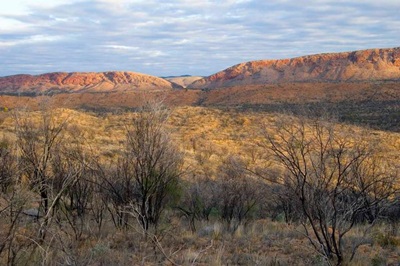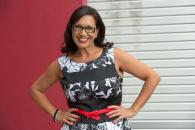AustLit
-
The following trail is linked to the The BlackWords Essays by Dr Anita Heiss, published by AustLit in 2015. They bring together the works, authors and organisations that are mentioned in the essays and support the teaching and incorporation of Aboriginal and Torres Strait Islander texts in teaching and general reading.
-
'When we talk of traditional ‘Country’… we mean something beyond the dictionary definition of the word. For Aboriginal Australians… we might mean homeland or tribal or clan area and we might mean more than just a place on a map. For us Country is a word for all the values, places, resources, stories and cultural obligations associated with that area and its features. It describes the entirety of our ancestral domains.' (Dodson, 2011:15 cited in Heiss, Anita, BlackWords: Aboriginal Children's Literature About Country. 2015)
'...In recent years there has been an increase in the number of Aboriginal authored children’s and young adult literature published that focus on the ‘meaning of place’ in an Indigenous context. Many of these works have a school audience in mind...(Heiss, Anita, BlackWords: Aboriginal Children's Literature About Country. 2015)
-
See full AustLit entry
In this essay Heiss addresses the increasing number of Aboriginal authored children's and young adult literature published that focuses on the 'meaning of place' in an Indigenous context. She demonstrates this by selecting writings and stories from regions such as remote, semi-remote and desert to tropics, which showcase the diversity of life in different parts of Indigenous Australia and the essence of Aboriginal storytelling.
(...more) -
'In recent years there has been an increase in the number of Aboriginal authored children’s and young adult literature published that focus on the ‘meaning of place’ in an Indigenous context. Many of these works have a school audience in mind. More specifically, urban stories are being written as a matter of priority. This is demonstrated by the release of the Yarning Strong Oxford University Literacy Project, and launched by education hero Chris Sarra...at the National Centre of Indigenous Excellence in Redfern in March 2011.' (Heiss, Anita, BlackWords: Aboriginal Children's Literature About Country. 2015)
see below the collection of graphic novels from the The Yarning Strong Land series relating to Aboriginal connection and relationships with land.
-
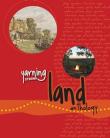 This image has been sourced from online.See full AustLit entry
This image has been sourced from online.See full AustLit entry'What relationship do Aboriginal and Torres Strait Islander people have with the land? This anthology, as part of the Yarning Strong series, offers spiritual, historical, scientific and legal responses to that question, as well as practical ways of working with this land’s resources today.' (Source: Publisher's website)
(...more) -
 This image has been sourced from web.See full AustLit entry
This image has been sourced from web.See full AustLit entry'Buddy’s great-grandfather used to say that the bush was full of “little miracles”—if you know where to look. But how do you learn to see a miracle? Buddy really wants to find out!' (Source: Publishers website)
(...more) -
 Image courtesy of publisher's website.See full AustLit entry
Image courtesy of publisher's website.See full AustLit entry'When Susie is forced to choose between her best mate, Isaac, and the gang at The Fort, she tells her friend a little lie—and he finds out. Why can’t Isaac just get over it?' (Source: Publishers website)
(...more) -
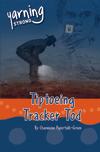 Image courtesy of publisher's website.See full AustLit entry
Image courtesy of publisher's website.See full AustLit entry'Tod wants to be the greatest little tracker in the city. He solves a case using only his eyes and a sprinkle of flour. He finds his way home with just his mobile for directions. Then Unc Bullfrog, the master tracker of all Yamaji trackers, comes to visit!' (Luguna Bay Publishing website)
(...more) -
 Image courtesy of publisher's website.See full AustLit entry
Image courtesy of publisher's website.See full AustLit entry'Lily and Nate said they would help their friends look for yabbies down at the river. But they’ve got a cool new computer game to play, and Uncle Neddy has just arrived from the west coast. He’s always got something interesting to say ..' (Source: Publishers website)
(...more) -
 Image courtesy of publisher's website.See full AustLit entry
Image courtesy of publisher's website.See full AustLit entry'Regan and Riley know all about their dad’s side of the family—the Irish side. But what about their mum’s mob? It’s time to find out.' (Source: Publishers website)
(...more) -
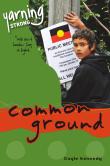 This image has been sourced from Anita Heiss 2014.See full AustLit entry
This image has been sourced from Anita Heiss 2014.See full AustLit entry'Maree, Zeke and J don't know what to expect when they visit their nan's traditional land to help with a land rights claim. And things get tougher than they ever could have imagined.' (Source: Booktopia website)
(...more) -
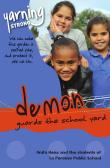 Cover image courtesy of publisher.See full AustLit entry
Cover image courtesy of publisher.See full AustLit entry"We can make this garden a sacred site, and protect it, yes we can." (Cover blurb)
(...more) -
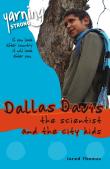 Cover image courtesy of publisher.See full AustLit entry
Cover image courtesy of publisher.See full AustLit entryDallas is angry when he has to visit his family’s land instead of going to the footy. Then he learns just how important his knowledge of country is … (Publishers website)
(...more) -
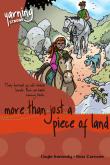 Cover image courtesy of publisher.See full AustLit entry
Cover image courtesy of publisher.See full AustLit entry'When Lara and Presto’s parents buy a home on their traditional land, the kids aren’t happy. Can they get used to life in the country?' (Publishers website)
(...more) -
'When talking about Country, expectations are often based upon the interior, red earth, remote communities, but as we have seen there are now more stories being written about urban areas, and even semi-remote areas.' (Heiss, Anita, BlackWords: Aboriginal Children's Literature About Country. 2015)
-
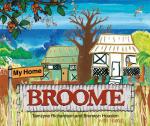 Courtesy of Magabala BooksSee full AustLit entry
Courtesy of Magabala BooksSee full AustLit entry'With a poem written by young Tamzyne Richardson as its centerpiece, My Home Broome captures the heart and soul of the multicultural town of Broome in Australia’s north west. Developed as a community project, artist and illustrator Bronwyn Houston worked with twelve talented students from Broome primary schools to illustrate Tamzyne’s poem. The result is a breathtaking array of artistic expression by Bronwyn and the students that celebrates the uniqueness of their town and its people.' (Source: Publisher's website)
(...more) -
'The Papunya School Book of Country and History (Allen & Unwin, 2001) was created by Anangu staff and students at the Papunya School in the Northern Territory in collaboration with children’s author Nadia Wheatley and illustrator Ken Searle. The book talks about the community and country 200 kilometres west of Alice Springs, where the Anangu (the Aboriginal people of the central desert region) are the traditional owners of the land, and where English and Luritja is spoken at school, with the languages of many countries spoken at home.' ...(Heiss, Anita, BlackWords: Aboriginal Children's Literature About Country. 2015)
-
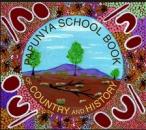 This image has been sourced from Web'Tells the story of how Anangu from five different language groups came to live together at Papunya. From the time of the first contacts with explorers, missionaries and pastoralists, through to the Papunya art movement and the Warumpi Band, this multi-layered text finally leads us to the development of the unique educational environment that is Papunya School.' Source: Libraries Australia (Sighted 14/09/2009). (...more)See full AustLit entry
This image has been sourced from Web'Tells the story of how Anangu from five different language groups came to live together at Papunya. From the time of the first contacts with explorers, missionaries and pastoralists, through to the Papunya art movement and the Warumpi Band, this multi-layered text finally leads us to the development of the unique educational environment that is Papunya School.' Source: Libraries Australia (Sighted 14/09/2009). (...more)See full AustLit entry -
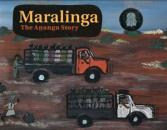 This image has been sourced from online.See full AustLit entry
This image has been sourced from online.See full AustLit entry'"Maralinga - the Anangu Story is our story. We have told it for our children, our grandchildren and their children. We have told it for you."
'In words and pictures Yalata and Oak Valley community members, with author Christobel Mattingley, describe what happened in the Maralinga Tjarutja lands of South Australia before the bombs and after.' (Publisher's blurb)
(...more) -
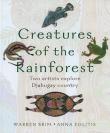 'Have you heard about the red-eyed green tree frog that lives high in the rainforest canopy? Or the ants that weave threads of silk? Or the pigeons from New Guinea that feed on quandongs and nutmeg? Discover the secrets of a Queensland rainforest, information about each animal and Djabugay name and wordlist.' Source; Libraries Australia (Sighted 03/06/2009). (...more)See full AustLit entry
'Have you heard about the red-eyed green tree frog that lives high in the rainforest canopy? Or the ants that weave threads of silk? Or the pigeons from New Guinea that feed on quandongs and nutmeg? Discover the secrets of a Queensland rainforest, information about each animal and Djabugay name and wordlist.' Source; Libraries Australia (Sighted 03/06/2009). (...more)See full AustLit entryThe book is aimed at upper-primary age children to use as a starting point for further research into Australian native animals and plants, and for Aboriginal studies.
-
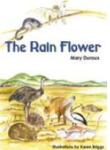 Image courtesy of publisher's website.See full AustLit entry
Image courtesy of publisher's website.See full AustLit entry'An adventure story about the journey of the night creatures and the day creatures to find a rain flower that will benefit them all. Their journey is one of learning and their discovery is unexpected.' Source: Libraries Australia (Sighted 19/12/2007).
(...more) -
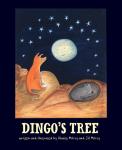 Courtesy of Magabala BooksSee full AustLit entry
Courtesy of Magabala BooksSee full AustLit entryDingo's Tree is a tale of friendship and sharing, it tells of the struggle to survive in a land that is devastated by mining. It is a powerful children's cautionary tale on the destruction and havoc that mining causes to land and to community. (Source Magabala Books website)
(...more) -
Bittangabee Tribe: An Aboriginal Story From Coastal New South Wales by Beryl Cruse, Rebecca Kirby, Liddy Stewart and Steven Thomas
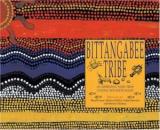 This image has been sourced from online.See full AustLit entry
This image has been sourced from online.See full AustLit entry'Written by Aboriginal students at Bega TAFE, and illustrated by Aboriginal children from Eden Public School, this delightful book tells the story of Ninima, his wife Mina and their children and the rhythms of their traditional life on the south coast of NSW. Kinship, landscape and cultural knowledge are gently explored, providing an excellent resource for exploring Indigenous and environmental issues.' (Publication summary)
(...more) -
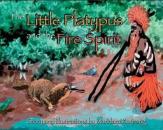 Image courtesy of publisher's website.'The duck-billed, web-footed, paddle-tailed, fur-covered platypus used not to look so peculiar. The platypus used to play in the bush, chasing bugs and butterflies, nipping the emu's long skinny legs, and running up and down the tails of kangaroos. One day the little platypus, with the help of the fire spirit, became the curious creature we know today, found diving, swimming and floating in the billabongs and rivers of the bush.' Source: Publisher's blurb (...more)See full AustLit entry
Image courtesy of publisher's website.'The duck-billed, web-footed, paddle-tailed, fur-covered platypus used not to look so peculiar. The platypus used to play in the bush, chasing bugs and butterflies, nipping the emu's long skinny legs, and running up and down the tails of kangaroos. One day the little platypus, with the help of the fire spirit, became the curious creature we know today, found diving, swimming and floating in the billabongs and rivers of the bush.' Source: Publisher's blurb (...more)See full AustLit entry -
The Legend of the Seven Sisters: A Traditional Aboriginal Story from Western Australia by May O'Brien and illustrated by Sue Wyatt
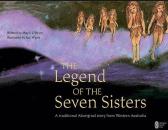 Image courtesy of publisher's website.See full AustLit entry
Image courtesy of publisher's website.See full AustLit entry'...The Wongutha people of the Eastern Goldfields area in Western Australia tell stories about the stars explaining how the stars came to be where they are. Some stars are grouped together and have special names.
One of these groups of stars is called the Seven Sisters. The Sisters were beautiful women who used to visit the Earth and wander the land. This is the story of why they appear in their position in the night sky. Source: Publisher's blurb
(...more) -
This collection includes 65 stories from Kadjina Aboriginal Community written and illustrated by children, teenagers and adults fro the Kadjina Aboriginal Community. Thie books were written in English, Walmajarri and Kriol between 1998 and 2002 by the Wulungarra School's Literature Production Centre. (...more)See full AustLit entry
Warning: Please be aware that this collection may contain images, artwork, perspectives and stories from people who are now deceased. The collection also contains words, terms or descriptions which may be culturally sensitive and are considered inappropriate today, but which reflect the period in which they were written.
-
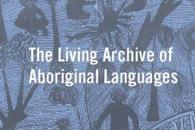 This image has been sourced from online.See full AustLit entry
This image has been sourced from online.See full AustLit entry'The Living Archive of Aboriginal Language is a digital archive of endangered literature in Australian Indigenous languages from around the Northern Territory.' This archive connects to the people and communities where the literature was created, allowing for collaborative research work with Indigenous authorities and communities.
Clicking on the website's map to enter the archive, opens hundreds of items in 25 languages from all over the Northern Territory. The Website gives comprehensive instructions on the use of the site for Linguists, Communities, teachers, and students and/or researchers.
(...more) -
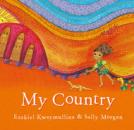 This image has been sourced from Publisher's website'The book was inspired by my Nana and Gran, who passed on their love of country to me. When I wrote the book I imagined what it would have been like for them as little girls, playing in their country without a care in the world. At the same time, I wanted to encourage self esteem in Indigenous youth as I feel Australia is in need of more Indigenous heroes. Because all heroes begin as children with a dream, hopefully books like this one bring them closer to that dream.' — Ezekiel KwaymullinaSee full AustLit entry
This image has been sourced from Publisher's website'The book was inspired by my Nana and Gran, who passed on their love of country to me. When I wrote the book I imagined what it would have been like for them as little girls, playing in their country without a care in the world. At the same time, I wanted to encourage self esteem in Indigenous youth as I feel Australia is in need of more Indigenous heroes. Because all heroes begin as children with a dream, hopefully books like this one bring them closer to that dream.' — Ezekiel KwaymullinaSee full AustLit entry
Source: Fremantle Press website, http://www. (...more) -
Welcome to My Country: Lakak Burarrwanga and Family by Banbapuy Ganambarr, Merrkiyawuy Ganambarr Stubbs, Ritjilili Ganambarr and Laklak Burarrwanga
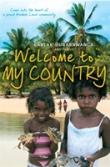 This image has been sourced from Publisher's websiteSee full AustLit entry
This image has been sourced from Publisher's websiteSee full AustLit entry'Laklak Burarrwanga and family invite you to their Country, centred on a beautiful beach in Arnhem Land. Its crystal waters are full of fish, turtle, crab and stingray, to hunt; the land behind has bush fruits, pandanus for weaving, wood for spears, all kinds of useful things. This country is also rich with meaning. 'We can go anywhere and see a river, hill, tree, rock telling a story.' Here too is Laklak's own history, from her long walk across Arnhem Land as a child to her people's fight for land rights and for a say in their children's schooling.
(...more)
You might be interested in...

